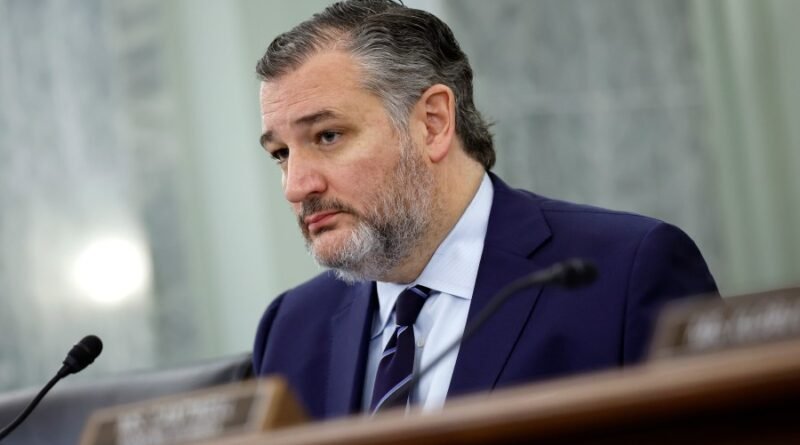Ted Cruz says he’s investigating California’s High-Speed Rail; this is what he’s done
Texas Sen. Ted Cruz says he has been investigating the California High-Speed Rail project, accusing the nation’s first publicly funded high-speed rail system of wasting taxpayer money and its governing board of a lack of transparency regarding costs.
The comments were made by Cruz on social media Tuesday in response to President Donald Trump’s announcement that he would be launching his own investigation into the project.
What Trump’s investigation would entail remains to be seen, but the president said earlier this week that tech billionaire Elon Musk’s Department of Government Efficiency would not be leading the effort.
As for the extent of Cruz’s investigation so far, CAHSR officials said, he has sent a letter.
The letter, which was sent May 29, 2024, was provided to KTLA upon request to the California High-Speed Rail Authority. It was also shared on the Committee on Commerce, Science, and Transportation website.

Addressed to former Transportation Secretary Pete Buttigieg, Cruz, acting in the capacity as ranking member of the Committee, questioned why the Biden Administration continued to grant the project federal funding, despite questions about its viability.
“DOT itself states that its project review process must ‘help ensure that taxpayers are getting the highest value for every dollar invested,'” the letter reads. “It is unclear if DOT complied with its own guidance to safeguard taxpayer dollars when selecting [CAHSR] for such a large amount of grant funding.”
Cruz, as well as the letter’s co-author, Missouri Rep. Sam Graves, also questioned whether other “effective and worthy projects” may have lost out on grant funding that was ultimately awarded to the California project.
The letter concludes with a request for Buttigieg to appear for an in-person briefing with the Committee to provide justification for awarding the project the federal funds and discuss, among other things, how the Department of Transportation evaluated the challenges facing the project, and the existing funding gap and projected ridership for the “initial operating segment” between Merced and Bakersfield.

The Department of Transportation was also requested to provide documents related to the CAHSR grant application process.
On Thursday, CAHSR officials confirmed that the requested meeting had been scheduled to take place in October 2024 but was canceled. It was never rescheduled.
That, officials said, is the extent of the Authority’s communication with Cruz.
KTLA reached out to Cruz’s office regarding the canceled meeting and whether anything else of material in his self-described investigation has happened since then. That request was not returned prior to the publishing of this story.
It’s unclear if Cruz plans to take additional steps to audit the California High-Speed Rail in the future, or if his comments were, as suggested by an industry professional who spoke to KTLA off the record, an act of political theater.
In the wake of Trump’s comments regarding his own investigation into what he referred to as “the worst managed project” he’d ever seen, the California High-Speed Rail Authority has pushed back on the notion that the project has little to show for what has been spent so far.
Dozens of large structures in the Central Valley have been completed or are under currently construction, utility lines have been relocated, vast swaths of land have been purchased to accommodate the train’s route and the entire system segment from San Francisco to Los Angeles has obtained environmental clearance. The Authority is also in the process of acquiring its first sets of high-speed trains.

Officials said earlier this week that, so far, about $13 billion has been spent on the project so far, with $10.5 billion paid for exclusively by the State of California. “Those expenditures have created over $22 billion in economic impact,” they said.
Still, the cost of completing the nation’s first true high-speed electric train system in a timely manner remains front of mind for the California High-Speed Rail Authority.
Last week, new CEO Ian Choudri spoke at an industry forum to discuss the project, calling it not just a transportation project but a “catalyst for economic growth and prosperity in the regions that are being connected.”
As the Authority’s new CEO, Choudri says he’s overseen a reorganization that he hopes will streamline operations and improve efficiency and, ideally, acquire future funding on a consistent basis, not “stop-and-go” funding like in years past.
He said the Authority was committed to ensuring the system gets completed, now hoping it can be delivered “sooner, faster.”
“We want to make sure it’s clear that we are committed to connect the Bay Area to Los Angeles; that is the goal,” Choudri said. “And we are not moving away from that while working to deliver useful segments that we are doing right now in the Central Valley to the public at a lower cost and on a faster timeline.”
To track current construction progress on the California High-Speed Rail yourself, officials say you can visit BuildHSR.com.
